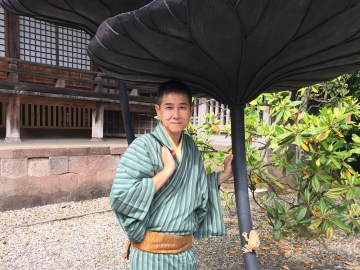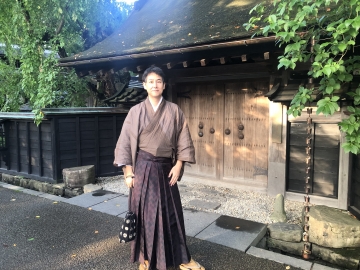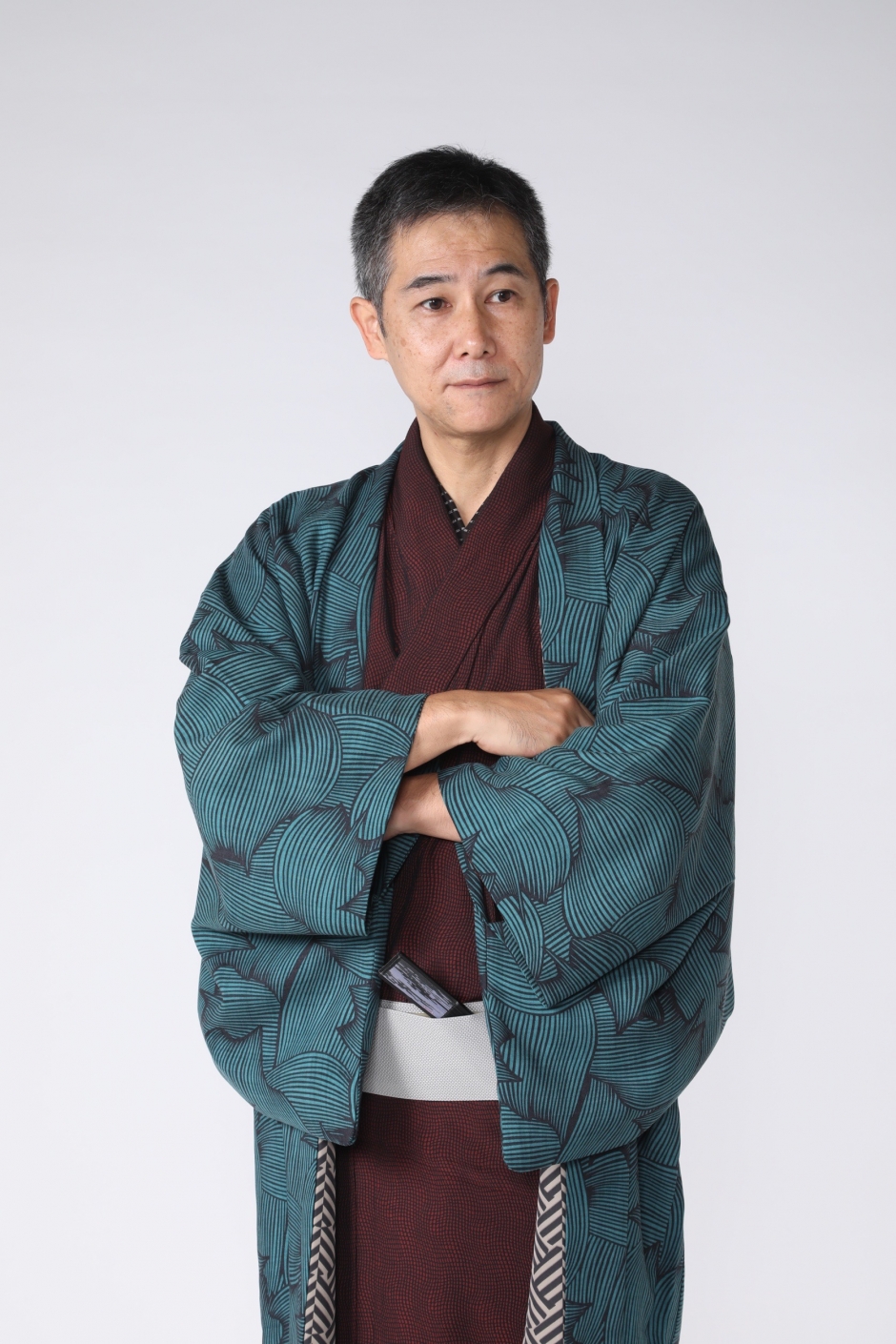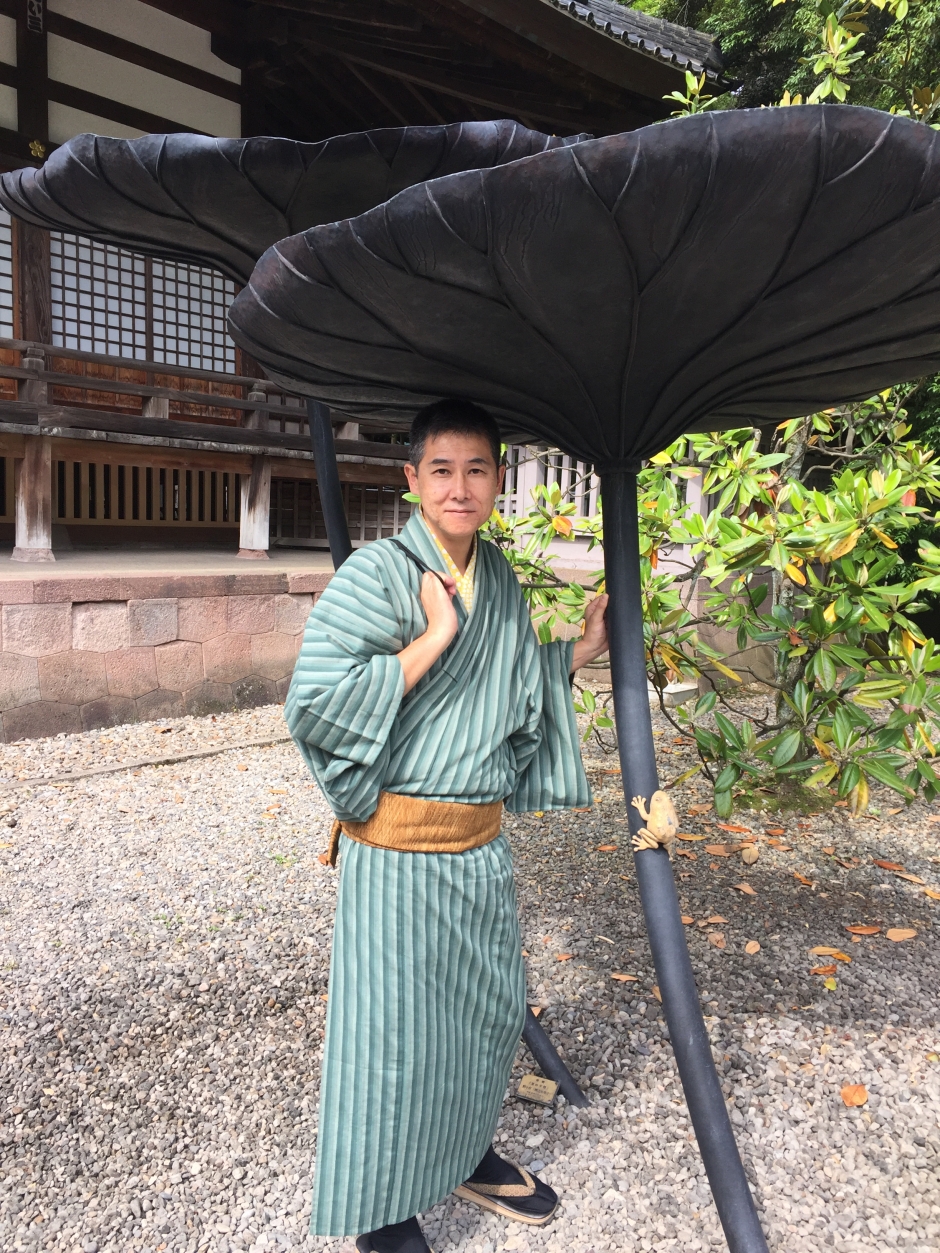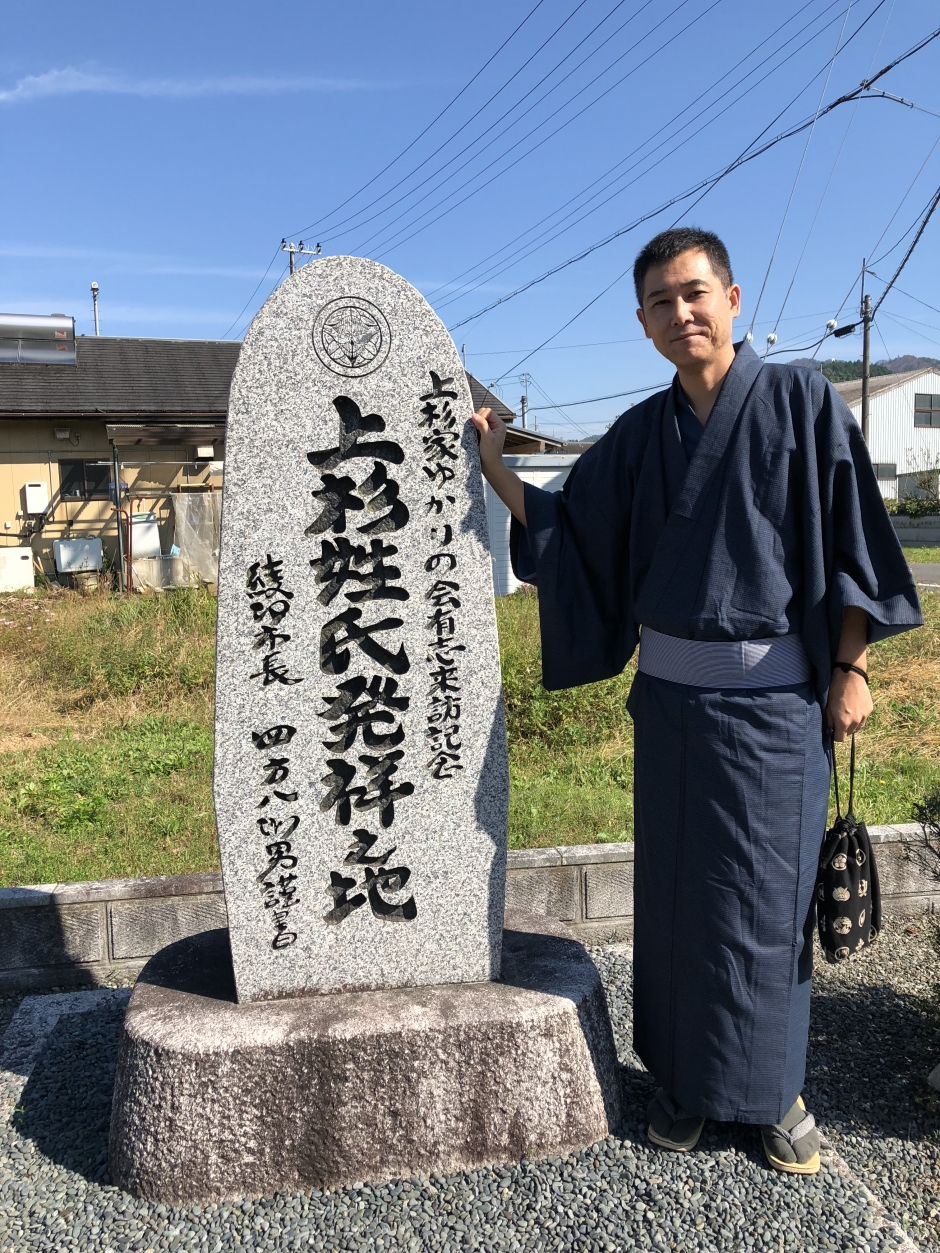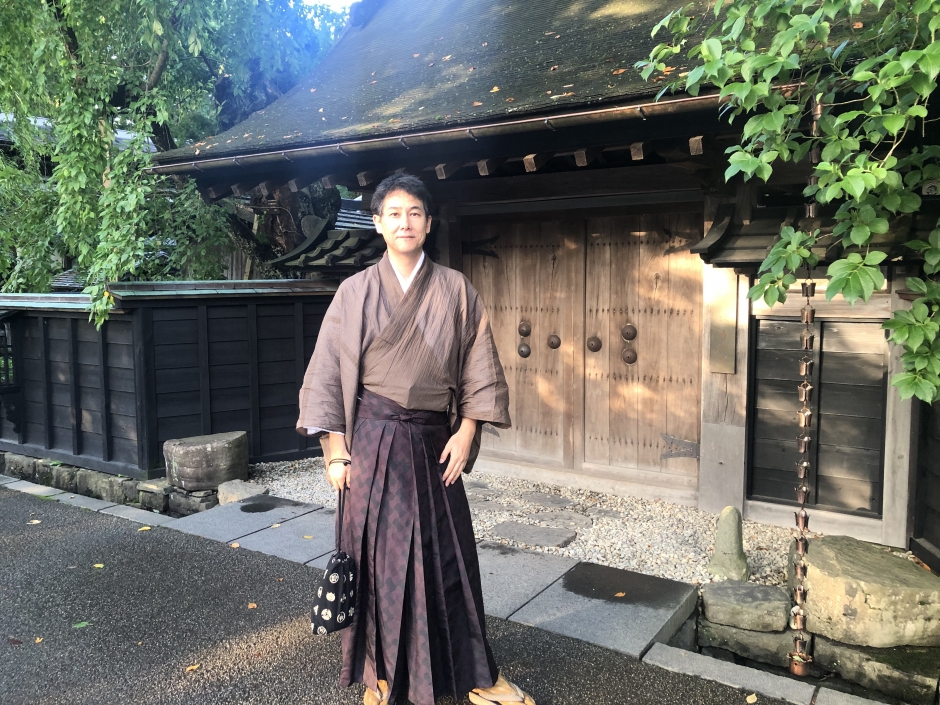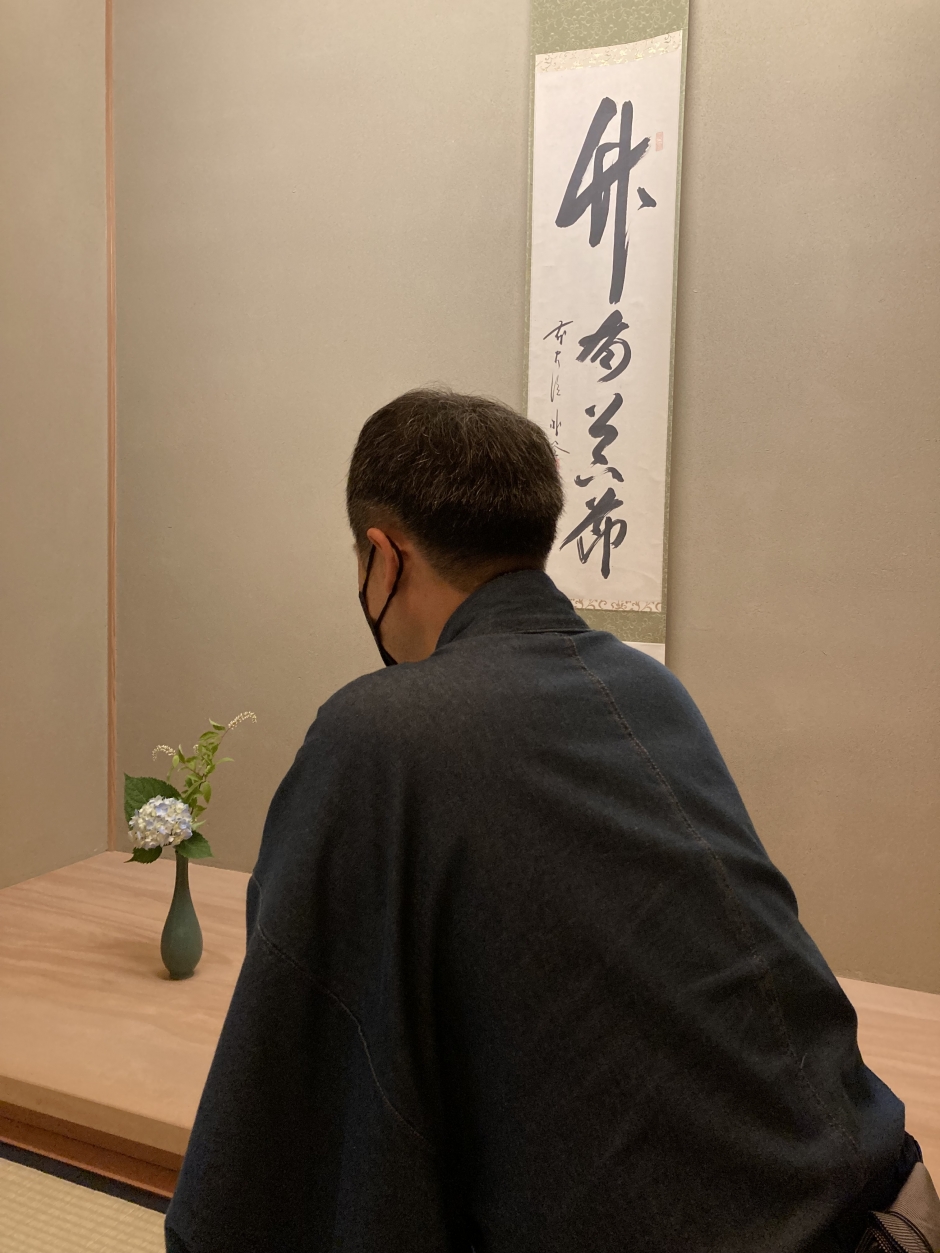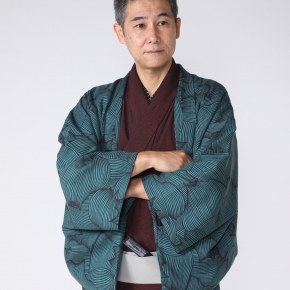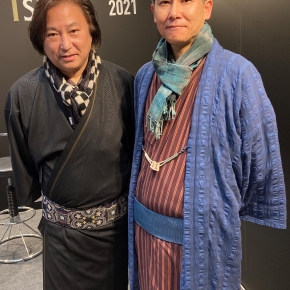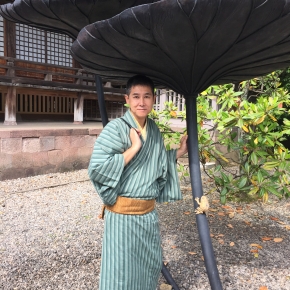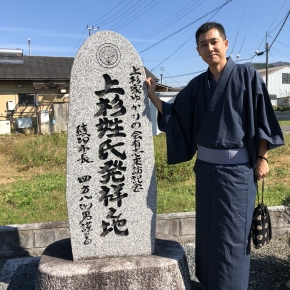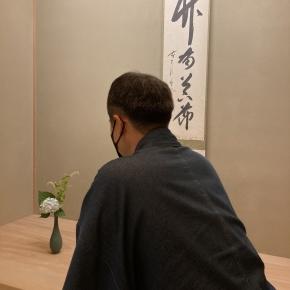
Washable Omeshi Kimono made by Watamasa and JOTARO SAITO’s Haori Coat.
Professor Yuji Uesugi, Faculty of International Research and Education (FIRE)
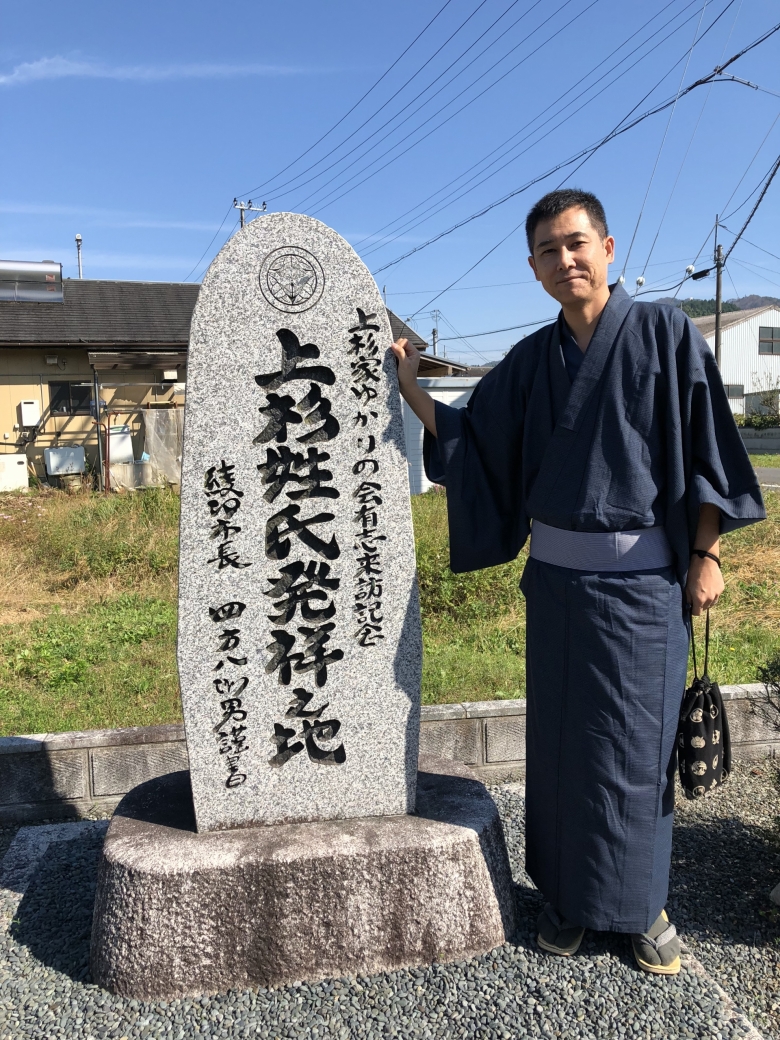
Professor Uesugi was born in 1970 in Shizuoka Prefecture, graduated from the Numazu Higashi High School in Shizuoka, Japan, obtained a BA (Liberal Arts) from the International Christian University (ICU) in Tokyo, an MS in Conflict Analysis and Resolution from the Institute for Conflict Analysis and Resolution (currently, the Carter Center for Peace and Conflict Resolution) in the USA, and a doctorate in International Conflict Analysis from the University of Kent in the UK. He also serves as the Deputy Director of the Okinawa Peace Assistance Center and the Director of the Hiroshima Peacebuilders Center. His recently published English books are, Japan’s Peacekeeping at a Crossroads: Taking a Robust Stance or Remaining Hesitant? (Palgrave Macmillan, 2022), Operationalisation of Hybrid Peacebuilding in Asia: From Theory to Practice (Palgrave Macmillan, 2021), and UN Governance: Peace and Human Security in Cambodia and Timor-Leste (Palgrave Macmillan, 2021). His Official Website is here.
When I visited Kyoto, I came across a Kimono shop near my hotel. I went inside the shop, and they took me to a reuse section where I saw a set of “Yuki Tsumugi” (silk products from Yuki in Ibaraki Prefecture) Kimono and Haori coat (called ensemble). As I am 182 cm tall, I can hardly find a Kimono that fits me well. A shop assistant said, “This set of Kimono just arrived yesterday. You are destined to wear this Kimono!” I was taken in by her sweet words and decided to purchase that set of “Yuki Tsumugi”.
Initially, I wore the Kimono on special occasions, such as a New Year’s visit to a shrine and international conferences. I realized that people often spoke to me when I wore the Kimono. Therefore, I decided to wear Kimonos more frequently. As I feel so happy when people tell me, “You look nice!”, I have begun purchasing more Kimonos. However, I found it difficult to find Kimonos that fit me well in reuse Kimono shops and internet shops. Thus, when I found one, I could not but buy it telling myself that this would be “a unique opportunity for a lifetime.”
You may think that it is difficult to wear a Kimono. I learned this all by myself by reading books and watching YouTube. I learned a lot from a YouTube channel called “Azumaya Kimono Hiroba Television,” a weekly Kimono show broadcasted every Saturday at 21:00. Through this channel, which is run by a Kimono shop offering offline get-together meetings, I was able to meet Kimono lovers from diverse professional backgrounds.
Azumaya promotes Kimonos for everyday use. They often argue that “beginners should wear a made-to-order Kimono because it is much easier to wear.” Being influenced by them, I decided to make my own Kimono from a roll of cloth; in Japanese, it is called “Atsuraeru” (verb) or “Atsurae” (noun).
If you wear Kimonos daily, you must wash them by yourself. Some Kimonos must be washed by professional cleaners; however, Kimonos made of cotton or hemp (linen) can be washed at home. Denim Kimonos are made of cotton. They are durable and can be easily washed at home. Hemp Kimonos are essential during hot and humid Japanese summers. Even when you are sweating all over, Hemp Kimonos can quickly evaporate the sweat. After washing and hanging it at home for one hour, it will dry. Silk Kimonos are typically not washable. One of the exceptions is “washable Omeshi” produced by a silk crepe company in Tango called Watamasa. It is made of silk and can be washed at home. Still, as they are made of silk, you can enjoy the gloss and soft and smooth feel of silk, which you cannot find in Kimonos made of cotton or hemp.
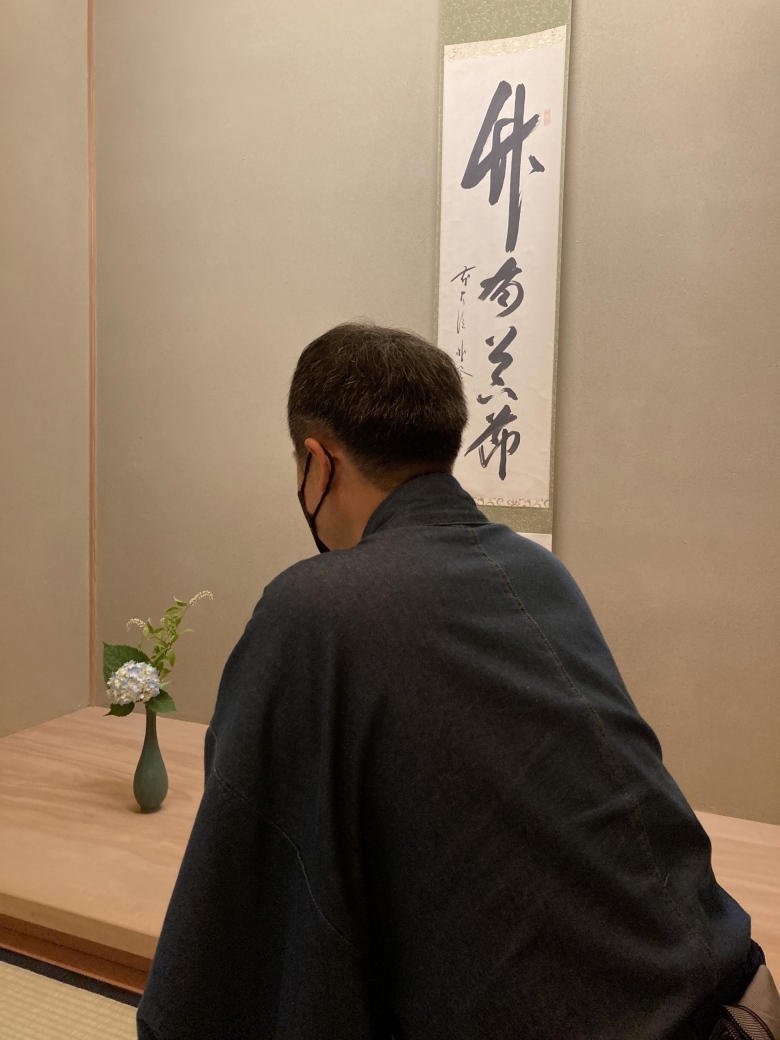
Tea ceremony wearing Denim Kimono.
Now, I wear a Kimono every day, not only in my “off time” but also when I am delivering lectures in a classroom, presenting my research at a conference, and taking part in overseas business trips. When attending a party, I would like to wear beautiful Kimonos. Usually, the color varieties of men’s Kimono are limited to dark blue, gray, brown, and black. However, the collection by JOTARO SAITO, a top Kimono designer, is outstanding. I enjoy joining his Kimono fashion shows and being inspired by his cutting-edge designs.
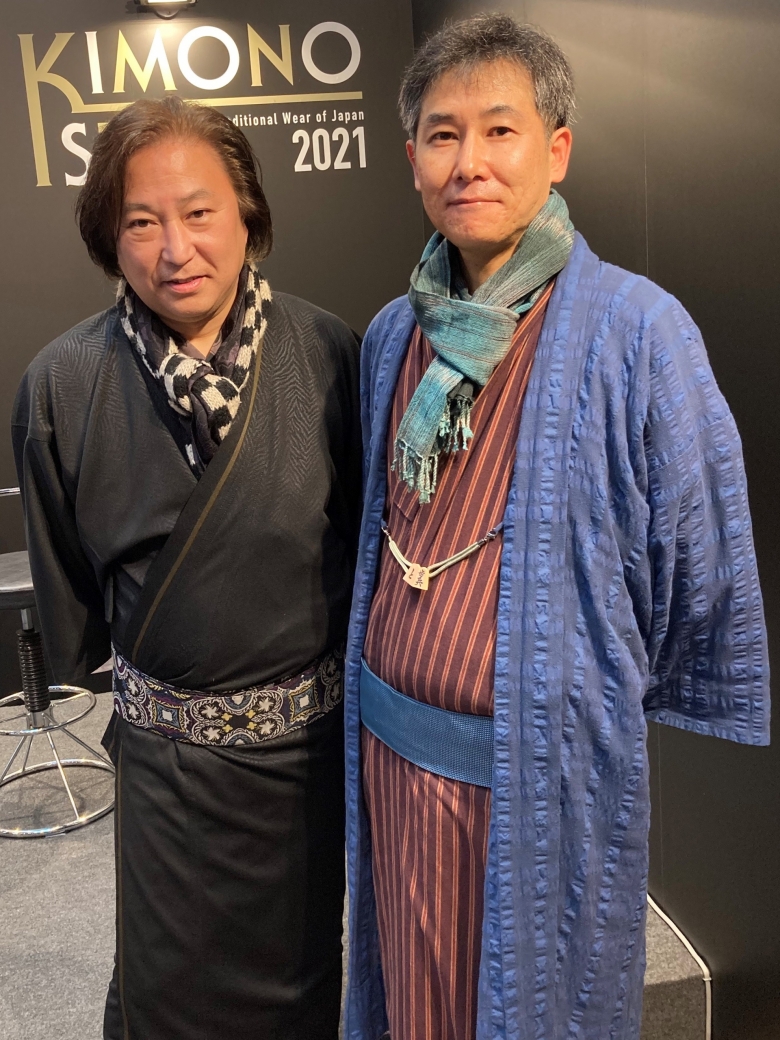
With Jotaro Saito, a Kimono Designer (Left).
As I wish to pass down the significance of Kimonos to the next generation, I am now preparing a course that focuses on Kimonos and other elements of Japanese culture. We can appreciate Japanese culture in many settings and enjoy wearing Kimonos not only in a graduation ceremony but also in a tea ceremony, a Kabuki and Rakugo (comic storytelling) show, and a performance of Iaido (the art of drawing a sword).
For example, high-ranking Iaido masters perform with “Kuromontsuki” (Black/formal Kimono with their family emblem) and a “Hakama” (a long-pleated skirt-like garment). Since I was a child, I have liked the combined appearance of a Kimono with Hakama, as it resembles a Samurai warrior. However, if you wear Hakama on everyday occasions, people may assume that you are wearing some kind of costume. A colleague of mine once said when we happened to be in the same elevator, “I thought that I had slipped back in the time of Botchan (a Japanese novel written by Soseki Natsume in 1906).” Then, I decided to practice Iaido so that I could wear Hakama and would not be mistaken as being a “Kosupure” (costume player), which may have not been a pure motive, but I am glad that I joined the Iaido Club. I am now over 50 years old, and it has been so refreshing to learn new skills under the guidance of a great Iaido master. The time I practice Iaido with students from Waseda University’s Iaido Club (an official circle of the University) makes me healthy and strong, both physically and mentally. I wish to continue enjoying the great variety of Japanese culture.
Left: Kimono beginners’ standard, Katagai Momen (cotton) made in Niigata Prefecture.
Right: See-through summer Kimono called Ojiya Chijimi, made of hemp.
*This article is a translation from the Japanese edition of Waseda Weekly published on June 7, 2023. The content is current at the time of Japanese publication.

